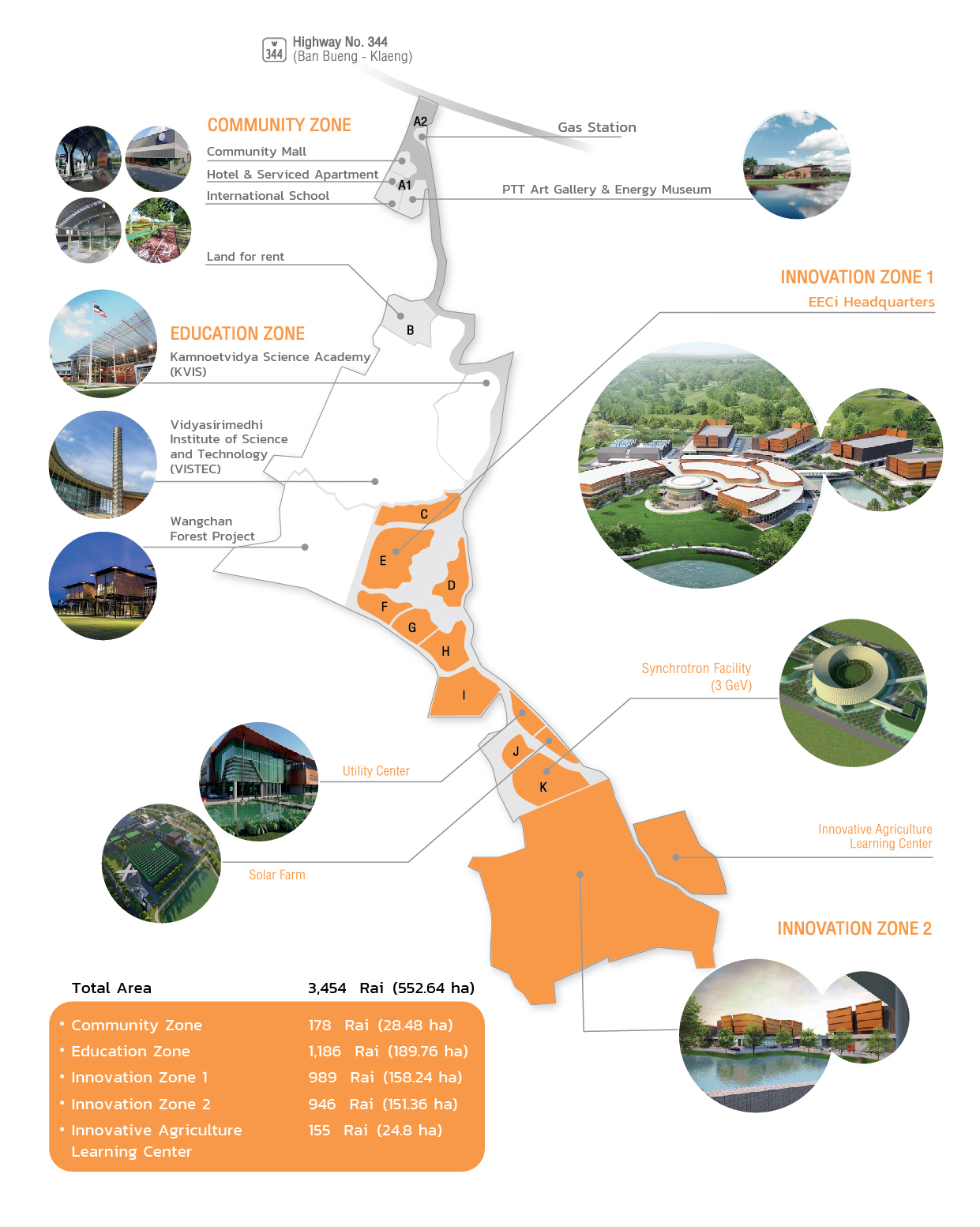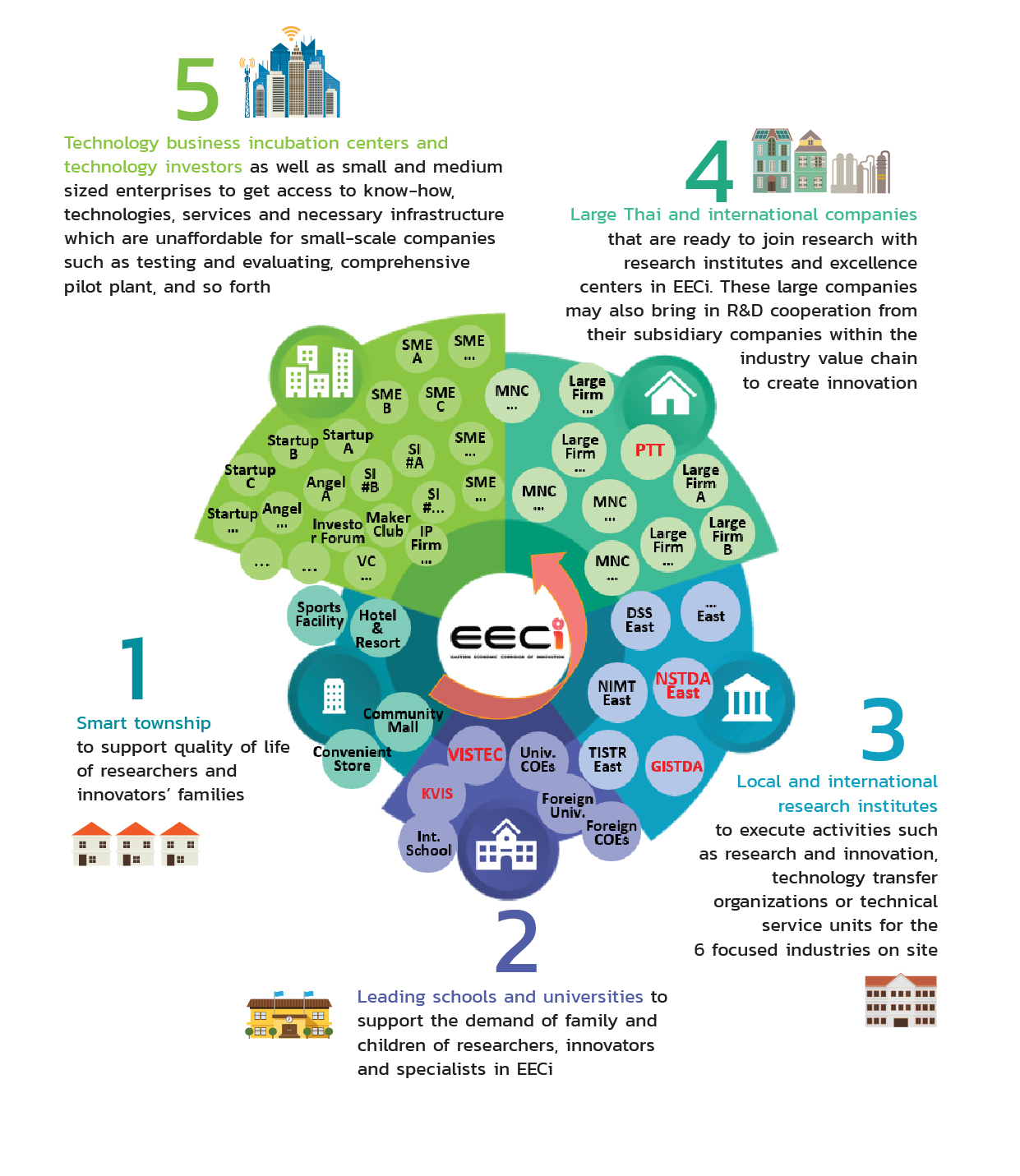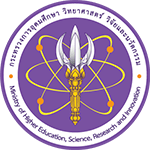Why EECi?
In order to meet this goal, EECi positions itself as a hub linking innovation and investment across the country for Thailand’s target industries. Research outputs at the laboratory level can scale up to commercial scale using infrastructure and supporting innovation ecosystem at EECi and the investment that follows thereafter can settle in the EEC or anywhere else. Likewise, investors bringing advanced technology for the target industries into the region can use infrastructure and innovation ecosystem at EECi to adapt the technology to the local conditions before settle the investment in the EEC or elsewhere in Thailand and ASEAN.

The development of EECi is responsible by the National Science and Technology Development Agency (NSTDA), a semi-autonomous government agency attached to the Thailand’s Ministry of Higher Education, Science, Research and Innovation. NSTDA partners with PTT Public Company Limited, Thailand’s national energy company, in the development of Wanchan Valley to become the first major site for EECi. In the partnership, PTT plays an important role in the basic infrastructure and smart township development, while NSTDA focuses on the development of the EECi innovation ecosystem.

The main objectives of EECi
(1) Technology and innovation research and development that can be “translated” into practical industrial applications, so called the Translational Research.
(2) Transferring technologies to the industrial sector in order to develop the country’s 10 targeted industries, by upgrading and strengthening existing industries and creating new industries with high levels of technology. The EECi will also promote startups with high levels of technology and innovation a move that is seen as fundamental to the growth of new industries, both within the Eastern Economic Corridor and in other parts of the country.
(3) Creating links to networks of research and development both within Thailand and overseas, to help generate an innovative “society with high levels of technology and to achieve a working integration between the private sector, educational and research institutes, and government organizations, or “triple helix” “relationship. And extend concept by involving people in local communities, thus creating a “quadruple helix” working “integration.
EECi will filled with a complete elements of innovation ecosystem. It will have new economic areas focused on research, development and “innovation, including government and private-sector laboratories, living laboratory, leading testing and analysis centers, pilot plants and demonstration plants. All of this will improve the quality of life of local people. This innovation ecosystem and its operational model are comprised of



